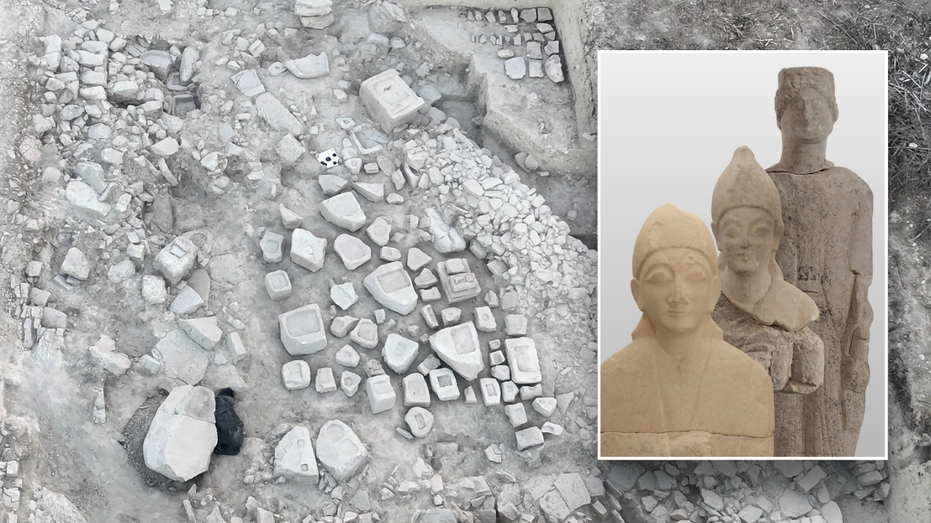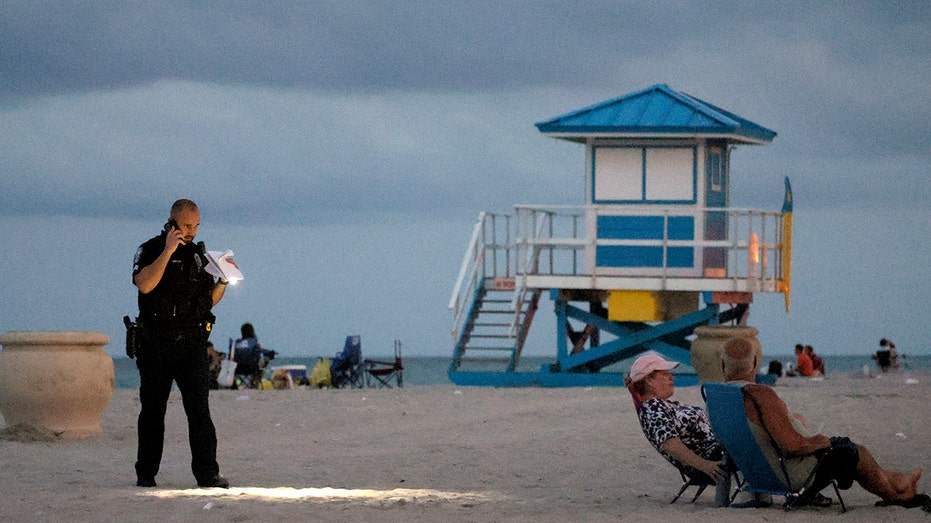Archaeologists recently made numerous “spectacular” discoveries at a long-forgotten temple to an Ancient Greek god, according to local officials.
The Department of Antiquities in Cyprus shared a Facebook post about the latest excavation on April 28. The site, the Sanctuary of Apollo at Frangissa, was first discovered in the 19th century before it was subsequently lost, the group said.
Apollo, the god of archery and the son of Zeus, was venerated both in Ancient Greece and Ancient Rome. He was one of the 12 Olympian deities in Greek mythology, said to have lived upon Mount Olympus along with his father Zeus and sister Artemis.
ARCHAEOLOGISTS UNEARTH STRANGE HEAD DEPICTING ROMAN GOD BENEATH CATHOLIC BASILICA
A German archaeologist named Max Ohnefalsch-Richter found the sanctuary in 1885, which the Department of Antiquities described as “one of the most spectacular finds of his time.”
“[It was] a richly furnished rural sanctuary of Apollo,” said the post, which was translated from Greek to English. “It was furnished with a lavish abundance of votive statues numbering in the hundreds, some of which were of colossal dimensions.”
But the 19th-century excavation was hastily done — and Ohnefalsch-Richter covered the sanctuary up with dirt to preserve it. It was soon forgotten.
“As the excavator completely covered the sanctuary, including the statue bases and walls, its location was eventually forgotten,” the Facebook post noted.
ARCHAEOLOGISTS UNCOVER WELL-PRESERVED TEMPLE, CULT CENTER DATING BACK TO ANCIENT EGYPT
German archaeologists began a new search for the site in 2021. It was eventually found, and the latest excavation of the site recently wrapped up.
This year, excavators found numerous statues of massive proportions, as well as votive statues that were found in the backfill area from 1885.
“In the process, the walls of the dedication courtyard and over 100 statue bases, some of colossal size, were uncovered in large areas,” the department said.
“Apparently in 1885 [the votive statues] were not recognized as artifacts in the rush,” the post continued. “They fundamentally expand our knowledge of this sacred place.”
Archaeologists also recently found “completely new types of statues” that were previously unknown. They plan to restore them to their original appearance.
ARCHAEOLOGISTS UNCOVER GOLDEN ‘TONGUES’ AND ‘NAILS’ IN ANCIENT EGYPTIAN TOMB: ‘REMARKABLE AREA’
“The discovery of clearly larger-than-life feet, for example, means that the existence of colossal male limestone figures from archaic times can now be proven,” the press release added.
“Such larger-than-life figures were previously only known here in Frangissa made from terracotta, including the famous ‘Colossus of Tamassos’ in the Cyprus Museum exhibition.”
The release went on, “In addition, evidence of other previously unknown types of votive objects was also found, such as marbled glass beads or Egyptian amulets made of faience [tin-glazed pottery].”
The statues also contained inscriptions in particular languages that give historians an idea of how old they were – possibly as far back as 2,700 years ago.
For more Lifestyle articles, visit foxnews.com/lifestyle
“The discovery of two bases with inscriptions is spectacular,” the statement read. “One is inscribed with several local Cypro-Syllabic characters, while the other refers in Greek letters to the Ptolemies, the Hellenistic rulers of Egypt who also controlled Cyprus at the time.”
“It shows that the sanctuary played an important role not only in archaic times (7th and 6th centuries B.C.), but also after the end of the Cypriot kingdoms.”
Archaeologists also believe that the site went through a significant expansion during the end of the Cypriot kingdoms, which can be observed in the architecture.
CLICK HERE TO SIGN UP FOR OUR LIFESTYLE NEWSLETTER
“During this time, a large peristyle courtyard was built next to the votive offering room, which was probably used for banquets.”
The department noted that the latest excavations “open up the possibility of exploring the architecture of the sanctuary, which was only inadequately documented by Ohnefalsch-Richte.”
The statement also said that “apparently” the “court had several phases of construction and utilization.”
“The further investigation of the preserved remains thus promises to provide important, far-reaching insights that will bring back to life the ritual behavior of past times and allow them to be seen in their original spatial setting.”




